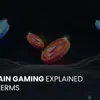Exploring blockchain technology and its potential applications for education
Blockchain technology may have the potential to scale up accountability and transparency in the field of education, resulting in a satisfactory educational experience for teachers and students — a win-win for all.
The Covid-19 pandemic was an eye-opener for the education sector across the world. Every institution was affected, starting from local primary schools to global universities. Many adapted and adopted online teaching-learning portals, and new ways of evaluation and assessment.
Those which could not adapt faced existential threat. Another fallout of these new ways of online education was the widening gap in access to education between the “haves and the have-nots” primarily due to the unwarranted asymmetry to internet access and digital platforms.
Indeed, the impact of the pandemic was felt most by the vulnerable sections of the society. Experts are saying that “online education is going to stay even if the pandemic ends.” Even though blended learning and flipped classroom teaching methods have been extended to students who may not be under a single roof, the assessments and evaluations in a fair manner of the students have become a herculean challenge.
As every aspect of education is increasingly becoming digitalised, the need for more secure and fool-proof systems that can keep track of the students’ academic activities is also becoming indispensable.
Interestingly, “blockchain technology” promises to be a viable option to tackle this problem.
Simplified picture of blockchain technology
What is blockchain technology? Few people were aware of this technology before cryptocurrency “bitcoin” became a household name. Blockchain derives its name from the digital databases or ledgers where information is stored as “blocks’’ that are coupled together forming “chains”.
Today, blockchain technology is truly revolutionising every aspect of human life. With the advent of Internet of Things (IoT), availability of cheap computing and internet services, innovations can be brought about into even the most minute processes and applications ranging from financial transactions (in case of cryptocurrencies), electoral voting to academic lessons and testimonials.
The inherent decentralised nature of blockchain makes the system fraud-proof as well as transparent.
In the field of education, blockchain technology may have the potential to scale up accountability and transparency, resulting in a satisfactory educational experience for teachers and students — a win-win for all.
Blockchain technology in Indian education
According to All-India Survey of Higher Education (AISHE) 2019-20, the Gross Enrolment Ratio (GER) is about 27.1 percent.
The New Education Policy (NEP), rolled out amidst the pandemic in 2020, aims to increase the GER in higher education to 50 percent by 2035. The NEP-2020 has proposed the concept of Academic Bank of Credits (ABC) in which higher education institutions will digitally deposit credits earned by the students.
Already, NPTEL, and Swayam portal offer courses by National Institutes, through which they offer a “hybrid” system of learning — the theoretical aspects online, while the lab work and examinations are done at the center nearest to the student. However, it may not be possible to achieve these without bringing innovation and new technology to the education sector.
Possible applications — way to go!
Blockchain could provide us with an excellent framework to keep track of student records. From day-to-day information like homework, attendance, and extracurricular activities to longer term information like degrees and colleges they have attended.
Blockchain technology could ensure that each teacher or student is given a unique id, which is stored in a decentralised ledger, therefore making the certificates/ degrees immutable and secure from any damage.
Moreover, students could upload their assignments and projects using blockchain, which will ensure there is little scope of plagiarism. Another positive aspect of blockchain could be the reward systems that could be built using it. This would allow educators to even gamify different aspects of learning as well as incentivise students that engage with these systems in a much simpler way.
“Skill Badges” created by the company ODEM (Switzerland), e.g., could be used for all educators and students to show their proficiencies in certain areas. This would incentivise the students to take a course taught by a professor whose skill badges demonstrate growth; similarly, professors would perhaps want to work with students who have demonstrated interest in expanding their skills.
This could be improvised to even design a scholarship system that could incentivise the students to maintain consistency and much more. Or the recruiters could use it to identify the genuine students who are motivated and sincere, and verify their credentials as being done, e.g., by the company APPII (UK).
Further, the performance of teachers and university administration could be scrutinised by their time-stamped records as available on the blockchain ledger. The record could be linked to the teacher’s annual appraisal report, making them more accountable and decreasing the scope for negligence or non-performance.
Besides, all other positive perks that come with digitalisation such as lower manpower required to keep all the records, or not needing much physical space for the storage, or being more secure from being lost, or resulting in easier access from different devices, already exist in one form or another.
The NEP also aims to introduce multidisciplinary education where the students can choose their own combination of major and minor subjects along with a flexibility in duration of course. This kind of multiple entry and multiple exit structure of NEP may not be possible without the proper use of blockchain technology.
Its use could be the only way to bring the much-required accessibility, transparency and accountability to the Indian education sector, and certainly India cannot afford to lag!
Edited by Megha Reddy
(Disclaimer: The views and opinions expressed in this article are those of the author and do not necessarily reflect the views of YourStory.)








